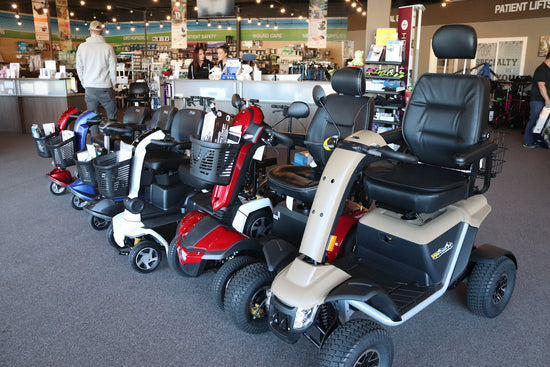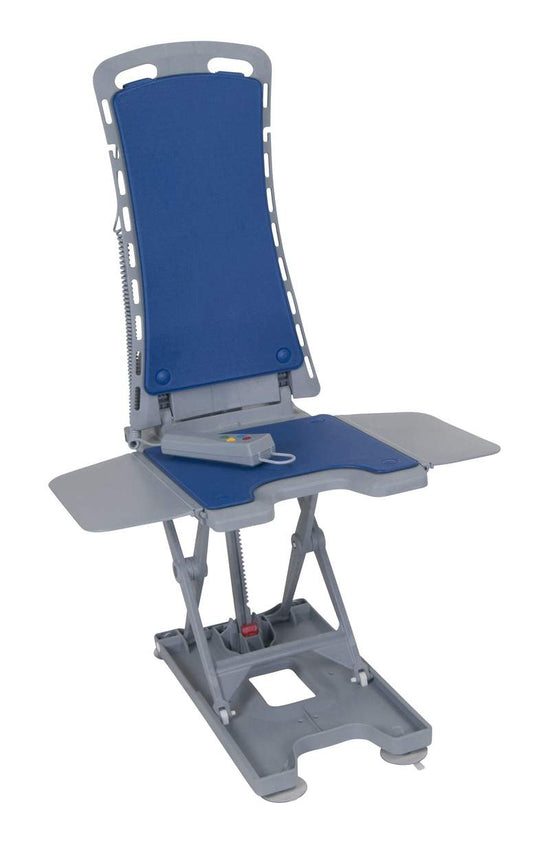Aging Gracefully: Essential Tips for Creating a Safe and Accessible Home
As we age, our homes need to evolve with us, adapting to our changing needs and lifestyles. A house that once seemed perfect can suddenly present challenges as mobility decreases and safety becomes a priority. But fear not, it's entirely possible to make your home a haven of comfort, safety, and accessibility without sacrificing style or functionality.
This article will guide you through essential modifications and tweaks, helping you to navigate this new chapter of life with ease and dignity. Here, you'll discover how to create a living environment that not only meets your practical needs but also enhances your quality of life. Let's delve into the world of accessible living spaces, exploring how small changes can have a significant impact on your everyday life.
Understanding the Importance of Home Adaptation for Aging
As we age, our physical abilities inevitably change. Stairs can become challenging to climb, reaching high shelves may turn into a daunting task, and even moving from one room to another might not be as simple as it once was. It's essential to understand that these changes are a natural part of aging and they don't signify a loss of independence. Instead, they highlight the need for home adaptations that can ensure safety and maintain quality of life as we age.
Home adaptation for aging, often referred to as 'aging in place,' is about making thoughtful modifications to your living environment to accommodate your changing needs. Here are some reasons why it's crucial:
- Safety: Aging-related changes can increase the risk of falls and other accidents. By adapting your home – installing grab bars, improving lighting, or eliminating tripping hazards, for instance – you can reduce these risks significantly.
- Comfort: Home adaptations can make daily tasks easier and less strenuous, enhancing comfort and reducing fatigue.
- Independence: With the appropriate modifications, you can continue doing many activities on your own, promoting a sense of self-reliance and dignity.
- Cost-effectiveness: Aging in place can be more affordable than moving into assisted living facilities. It's an investment that pays off in the long run.
Understanding the importance of home adaptation for aging is the first step toward creating a safe, comfortable, and accessible living space. It's about respecting the aging process and making proactive changes to accommodate it, allowing for a more graceful and dignified aging experience.
Assessing Your Current Home: Key Areas to Consider
Before you begin making modifications to your home, it's crucial to conduct a thorough assessment of your current living space. This evaluation will help pinpoint potential hazards and identify areas that need adjustment to accommodate your changing needs. Here are some key areas to consider:
- Entrances and Exits: Look at the accessibility of your home’s entrances and exits. Are there stairs that could pose a problem? Would installing a ramp or handrails make access easier?
- Bathrooms: Bathrooms can be hazardous areas due to wet surfaces. Assess the need for safety features like grab bars, non-slip mats, and bath benches or stools.
- Kitchens: Evaluate your kitchen in terms of accessibility and convenience. Can you easily reach all cabinets and appliances? Would lowering countertops or installing pull-out shelves be beneficial?
- Bedrooms: Consider the ease of moving around your bedroom and reaching for items. Is the bed at a comfortable height? Do you have adequate lighting to navigate safely during the night?
- Living Areas: Examine your living room and other common areas. Is there enough space to move around furniture? Are there any tripping hazards like loose rugs or clutter?
- Outdoor Areas: Don't forget about your yard or patio. Is the pathway clear and well-lit? Could outdoor handrails or ramps improve safety?
Remember, the goal of assessing your home is not to highlight limitations but to identify opportunities for improvements. By addressing these areas, you can create a safer, more comfortable, and accessible environment that supports your independence and enhances your quality of life.
Bathroom Safety: The Role of Bath Benches, Stools, and Grab Bars
Bathrooms, with their hard surfaces and wet conditions, can be one of the most dangerous areas in a home, especially for those aging in place. Enhancing bathroom safety is thus a critical aspect of creating a safe and accessible home. This is where products like bath benches, stools, and grab bars come into play.
- Bath Benches and Stools: These products provide a stable surface to sit on during bathing, reducing the risk of slips and falls. They are particularly beneficial for individuals who may have difficulty standing for long periods. A product like the Bathroom Safety Shower Tub Bench Chair with Back offers excellent support and comfort, while the Bathroom Safety Swivel Seat Shower Stool adds the convenience of a rotating seat, making maneuvering easier.


- Grab Bars: Grab bars provide crucial support, helping prevent falls and aiding balance during tasks such as getting in and out of the shower or tub, or moving from sitting to standing positions. The Adjustable Angle Rotating Suction Cup Grab Bar is a versatile option, allowing you to position the bar at the perfect angle for your needs. The Suction Cup Grab Bar provides a sturdy handhold, and its suction cup design allows for easy installation and removal without damaging walls.


Here are some key considerations when incorporating these products:
- Positioning: Place grab bars and seating solutions strategically to support movement and balance where needed most.
- Quality and Durability: Choose products that are robust, reliable, and able to withstand the humid bathroom environment.
- Comfort and Ease of Use: Opt for products that are comfortable, easy to use, and don't require complex assembly or installation.
Remember, bathroom safety is not just about preventing accidents—it's about ensuring comfort, independence, and peace of mind. By integrating bath benches, stools, and grab bars into your bathroom, you can create a safer and more accessible space that supports your needs as you age gracefully.
Kitchen Modifications for Easy Accessibility
As we age, the kitchen, a central hub of activity, may present some challenges. However, with thoughtful modifications, it can be transformed into an accessible and user-friendly space. Here are some key areas to consider:
- Counter Heights and Depths: Consider adjusting your counter heights to accommodate sitting or standing without strain. Similarly, shallow-depth countertops allow easier reach to the back.
- Pull-out Shelves and Lazy Susans: These features make accessing items in your cabinets easier, reducing the need for excessive bending or reaching.
- Lever-Style Handles: Traditional knobs can be difficult to grip. Lever-style handles for doors and faucets are easier to operate.
- Lighting: Good lighting is essential for safety. Ensure all work areas are well-lit, and consider under-cabinet lighting for better visibility.
- Appliances: Opt for appliances with easy-to-read controls located at the front. Consider models with safety features such as automatic shut-off.
- Flooring: Choose non-slip, easy-to-clean flooring to reduce the risk of slips and falls. Avoid high-gloss finishes that may create glare.
Remember, the goal of these modifications is to promote independence, safety, and functionality. The kitchen should be a comfortable space where you can continue to enjoy preparing meals and hosting family and friends. By considering these changes, you can ensure your kitchen remains a safe, accessible, and enjoyable space as you age gracefully.
Making Your Living Room and Bedroom Comfortable and Safe
The living room and bedroom are spaces where we spend a significant amount of our time. Ensuring these areas are both comfortable and safe is essential when preparing your home for aging in place. Here are some key considerations:
- Furniture Placement: Arrange furniture to create clear, unobstructed pathways. This promotes ease of movement and reduces the risk of tripping or stumbling.
- Lighting: Adequate lighting is crucial for safety. Ensure all areas, including closets and reading nooks, are well-lit. Consider night lights for nighttime navigation.
- Seating: Opt for sturdy chairs with armrests to aid in sitting and standing. Adjustable beds can also make getting in and out easier and more comfortable.
- Rugs and Mats: Loose rugs can be a tripping hazard. Secure them with non-slip pads or consider removing them entirely.
- Storage: Keep frequently used items within easy reach to prevent overstretching or bending.
At Everything Medical, we understand the importance of comfort and safety in your home. We offer the highest quality of medical supplies and equipment designed to facilitate aging gracefully at home. From safety necessities like non-slip mats and adequate lighting solutions to mobility aids that can be integrated seamlessly into your living spaces, we're committed to helping you maintain your independence while ensuring your home remains a safe haven.
Remember, creating a safe and accessible environment doesn't mean compromising on style or homeliness. With thoughtful planning and the right products, you can age gracefully in a home that's both comfortable and secure.




